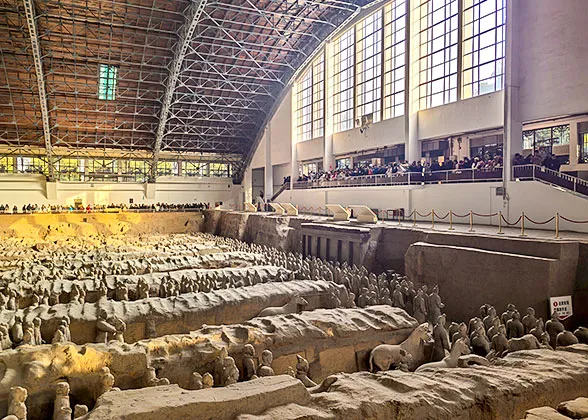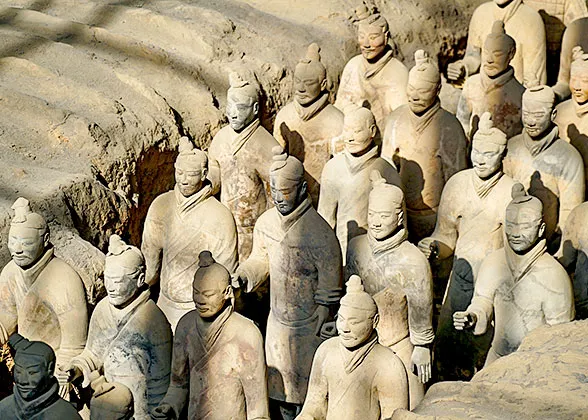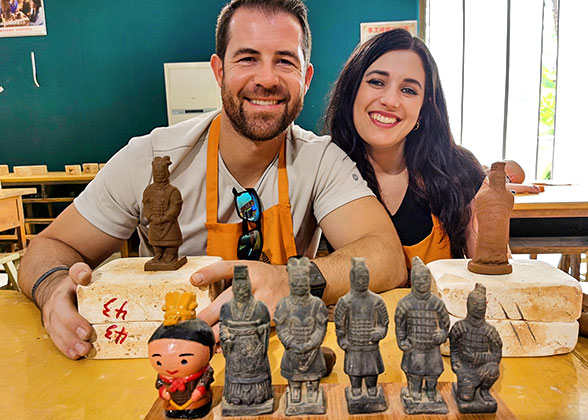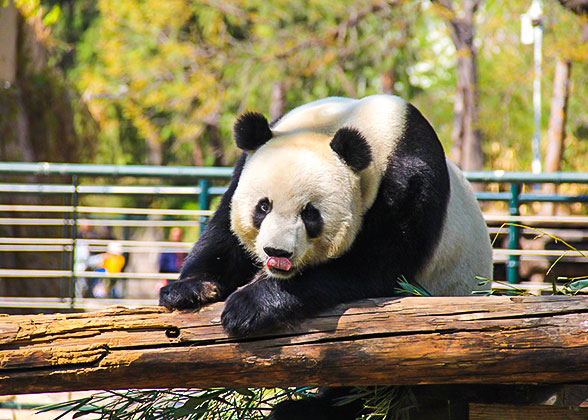Why are there partition walls in the pits of Terracotta Army?
When visiting the Terracotta Army, visitors will notice and be curious about the long, bulky partition walls made of yellow soil. Built over 2,200 years ago, these walls were originally designed as load-bearing structures to support the roof of the pits and organize the terracotta warrior figures into orderly groups. Today, they continue to serve a vital protective role and cannot be removed.
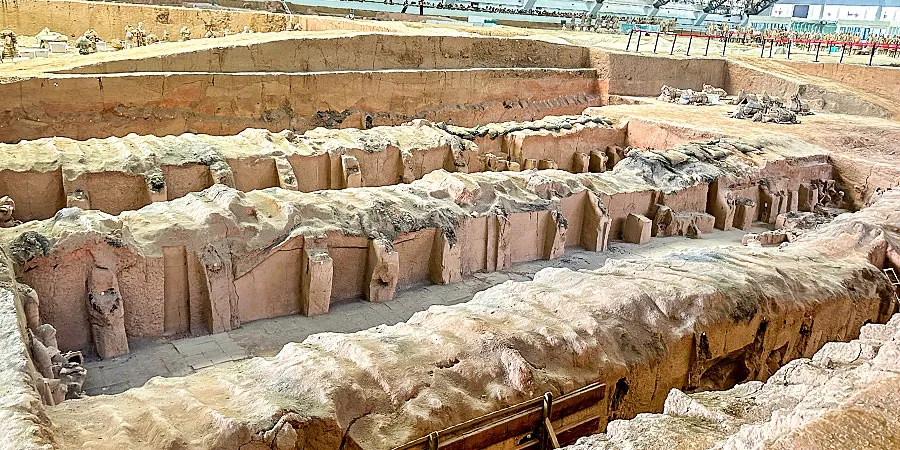 |
| Partition Walls in Pit 1 |
Why were partition walls built in the pits of the Terracotta Army?
1. Used as load-bearing walls
Once the walls were in place, the terracotta warrior figures, crafted outside the pit, were positioned inside. After arranging them neatly, a roof was constructed using wooden beams across the partition walls, covered with mats to prevent soil from falling in, and paved with bricks underneath, creating a fully enclosed underground space.
Finally, the passageways were sealed, and the pit was carefully backfilled with layers of soil, compacted repeatedly until level with the ground. These partition walls, along with the wooden pillars, supported the weight of the heavy soil above, preventing collapse and protecting the terracotta figures, even during strong shaking, just as load-bearing walls protect a building today.
2. Distinguish Different Units of the Terracotta Soldiers
These partition walls naturally divide the entire underground army into different units based on their military roles, ensuring that various troop types do not interfere with each other. For example, the cavalry and infantry warriors were separated, and soldiers were distinguished from officers. At the same time, these partition walls act as reference lines, allowing thousands of terracotta warrior figures and horses to be arranged in orderly formations. This well-organized army reflects the strict military system of the Qin Dynasty (221 - 207 BC), conveying the idea that Emperor Qin Shi Huang (259 BC - 210 BC), the first emperor of China, could command an invincible army even in his afterlife.
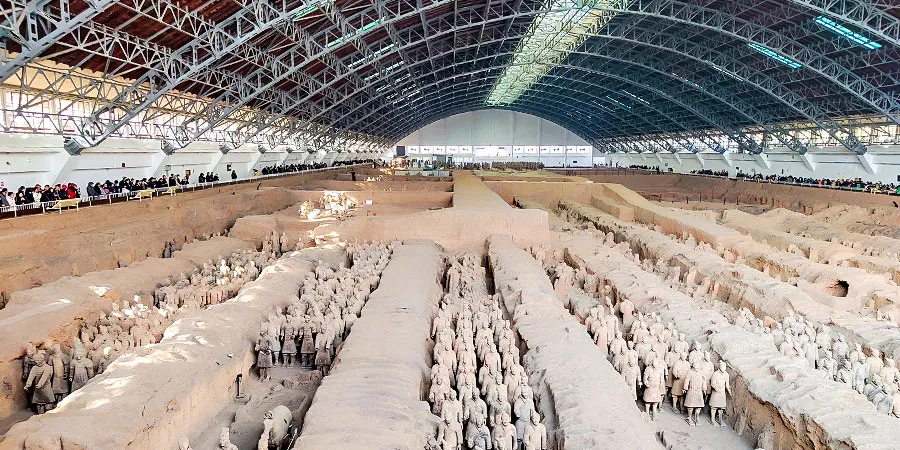 |
| Terracotta Warriors Distinguished by Partition Walls |
3. Provide Isolation and Protection for Terracotta Warriors
The partition walls also provide physical isolation and protection for the terracotta warrior figures. They act as buffers, helping to prevent large-scale and continuous collapses of terracotta figures that could be caused by earthquakes or other external forces. In addition, these walls can effectively contain hazards such as fire or water damage, preventing their spread to other sections of the pit. For instance, during the excavation of Pit 2, a section of one partition wall tilted due to groundwater erosion, causing the wooden beams above to collapse. However, thanks to the partition wall's protection, the terracotta warrior figures in the adjacent area remained intact.
|
|
Why can't these partition walls be removed now?
1. To Preserve the Original Historical Site
The primary reason for not removing these partition walls is to protect the integrity and historical authenticity of the site. Built over 2,200 years ago, these walls are historical relics in their own right, representing the advanced rammed-earth construction techniques of the Qin Dynasty. Preserving them helps maintain the original structure and layout of the pits. Moreover, altering a historical site to suit modern aesthetic preferences goes against the goal of respecting ancient craftsmanship and retaining the site's authentic appearance.
2. To Avoid Damage during Removal
Removing the partition walls would inevitably cause harm to the nearby terracotta warrior figures. The removal process itself could generate collision and impact, potentially leading to accidental breakage or damage. Furthermore, these walls function as natural barriers that help stabilize the surrounding conditions. If the walls were removed, the expanded space would alter air flow and humidity levels, potentially accelerating the weathering and cracking of the figures, as well as the flaking of their painted surfaces.
- Last updated on Oct. 23, 2025 by Doris Xue -
